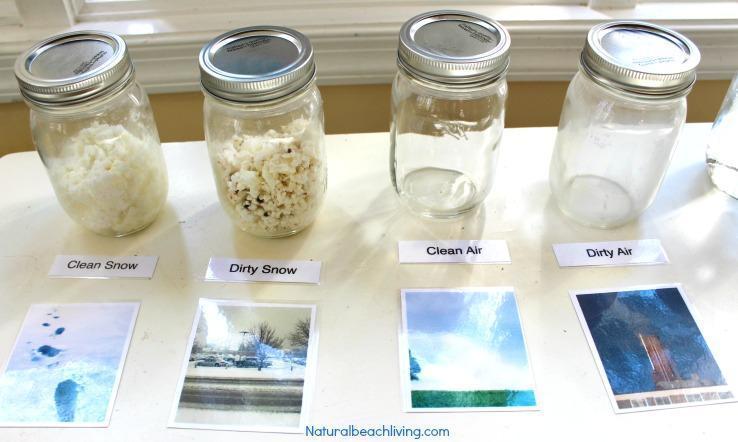Πόσο καθαρός είναι ο αέρας που αναπνέουμε;Εξετάστε τον αέρα γύρω σας για να κατανοήσετε μια παγκόσμια πρόκληση

Έτοιμοι για δράση;
Τι
Πιθανές συνδέσεις με το αναλυτικό πρόγραμμα
Ποιος
Οι άνθρωποι που αναλαμβάνουν τον ρόλο του/της εκπαιδευτικού
Πού
Οι χώροι όπου πραγματοποιούνται οι εκπαιδευτικές δράσεις
Με
Τα μέλη της κοινότητας για ευκαιρίες συνεργασίας
Σύντομη περίληψη
Σε αυτό το Εκπαιδευτικό σενάριο, οι μαθητές θα αποκτήσουν βαθύτερη κατανόηση της ρύπανσης και των τρόπων με τους οποίους ρυπαίνεται η ατμόσφαιρα. Θα μάθουν από πού προέρχεται η ρύπανση, πώς επηρεάζει τον καθένα μας προσωπικά και θα συζητήσουν τους τρόπους μείωσης ή εξουδετέρωσης της ρύπανσης, διερευνώντας πώς θα μειώσουν τον αντίκτυπό της στους ανθρώπους. Οι μαθητές θα φτιάξουν δικούς τους ανιχνευτές ρύπανσης, συλλέγοντας δεδομένα για τα επίπεδα μόλυνσης της ατμόσφαιρας στο σχολείο τους και στην κοινότητά τους. Θα αξιοποιήσουν τα ευρήματά τους ώστε να αποφασίσουν πώς θα μπορούσαν να επιλύσουν το πρόβλημα της ατμοσφαιρικής ρύπανσης και μετά θα σχεδιάσουν και θα κατασκευάσουν μια πρότυπη συσκευή.
In this activity, students will write down what they already know about pollution before sharing their ideas within a small group, identifying similarities and differences between their ideas. They will share ideas as a class, addressing any misconceptions. Students will then learn what pollution is, and their ideas will be displayed.
In this activity, students will think about how pollution affects their bodies. A local expert will be invited into the classroom so the students can ask questions and hear from a professional. The expert will show them a diagram of the lungs and demonstrate what happens when we breathe in polluted air.
In this unit, students will take part in a variety of investigations in the classroom to explore the different types of pollution. A carousel of investigations, incorporating the 5 senses, will be set up for the students. This comprises an oil spill simulation to examine the potential effects on wildlife, real-world testing of biodegradability to understand pollution caused by waste, modelling pollution uptake by plants using celery, creating pollution display jars, and recording the sights and sounds the students feel are related to pollution outside such as traffic.
In this unit, students will be observing pollution over time using low tech pollution kits (O-zone badge testers). They will use the test kits in 3 different areas to observe if levels of pollution changes throughout the week. While in the local park, students will also go on a lichen hunt to learn how lichens are natural indicators of pollution.
The students will estimate local vehicle pollution by counting different types of vehicles outside school. They will then go back to the classroom to organise the data they have collected, and estimate pollution levels in each area. Students will also create pictograms to see which vehicles are the worst pollutants.
In this unit the students will calculate pollution in the local area. They will put DIY sensors out, collect data, analyse it and draw conclusions. They will then calculate pollution levels using the Hackair app. Next, they will look at trees as filters. Students will combine this with their previous data to create infographics on the number of cars vs. trees. Finally, they will calculate the number of trees needed to counteract car pollution.
In this unit, students will investigate different materials in the classroom to see how well they can be used as filters and consider how these can help with pollution. They will mix powders & separate them using common filters. Students will then examine finer filters with a microscope to understand how they work.
In this final unit the students will design a solution to help either reduce pollution, or help live with existing pollution without suffering as much. Firstly they will make a sketch model of their solution to test the concept. Then they will make a larger and more detailed prototype with support from experts. They will share their solutions with the school community.
Ανατροφοδότηση εκπαιδευτικού
Ιδιαίτερες στιγμές
- Οι μαθητές έμειναν έκπληκτοι από την έκταση της ατμοσφαιρικής ρύπανσης στην περιοχή τους. Επίσης, τους άρεσε πολύ η διαδικασία συλλογής δειγμάτων και παρατήρησης της ρύπανσης.
- Οι μαθητές απόλαυσαν πραγματικά το υπαίθριο κομμάτι του Εκπαιδευτικού σεναρίου, το να βρίσκονται έξω από την αίθουσα διδασκαλίας.
Δύσκολες στιγμές
Γενικές συμβουλές
- Η εκπαιδευτικός επιστράτευσε φίλους και συναδέλφους για να τη βοηθήσουν να βρει ειδικούς (π.χ. ο γιατρός στη Εκπαιδευτική ενότητα 2 ήταν ο σύζυγος μιας συναδέλφου).